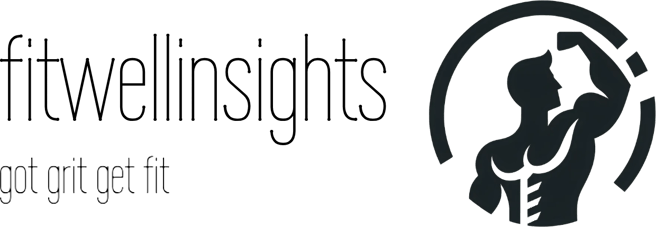
After Burn
Muscle recovery
Replenishing Your Body After Exercise: A Guide to Optimal Recovery
Exercise is a powerful tool for building strength, endurance, and resilience. But the real transformation happens after the workout, during recovery. This is when your body repairs muscle tissue, replenishes energy stores, and prepares for the next challenge. To make the most of your efforts, it’s essential to prioritize recovery through smart nutrition, hydration, and lifestyle habits. Here’s how I approach post-workout recovery to feel my best and keep progressing toward my goals.
Nutrition: Fueling Your Body for Repair
What you eat after a workout can make or break your recovery. Here’s what I focus on to ensure my body gets what it needs:
1. Protein: Repair and Rebuild
After a tough session, my muscles feel fatigued—and for good reason. Exercise creates tiny tears in muscle fibers, and protein is the key to repairing them. I aim to include a high-quality protein source within 30–60 minutes post-workout to kickstart recovery.
- My Go-To Options: Grilled chicken, scrambled eggs, or a quick protein shake with almond milk.
- Why It Works: Protein provides the amino acids needed to rebuild muscle, helping me recover faster and grow stronger.
2. Carbohydrates: Restore Energy
I used to underestimate the importance of carbs, but they’re crucial for replenishing glycogen stores, especially after intense or long workouts. Pairing carbs with protein not only refuels my energy but also enhances muscle repair.
- My Favorites: A banana with peanut butter, sweet potatoes with grilled salmon, or a smoothie with oats and berries.
- Pro Tip: If I’ve had a particularly grueling session, I’ll add a bit more carbs to my post-workout meal to ensure I’m fully replenished.
3. A Balanced Diet: The Bigger Picture
While post-workout nutrition is important, I’ve learned that overall dietary habits matter just as much. Eating a variety of whole, nutrient-dense foods ensures my body gets the vitamins, minerals, and antioxidants it needs to function at its best.
- My Staples: Leafy greens, colorful veggies, lean proteins, healthy fats like avocado, and complex carbs like quinoa or brown rice.
- What I Avoid: Ultra-processed foods that leave me feeling sluggish and slow down recovery.
---
Hydration: The Unsung Hero of Recovery
I used to overlook hydration, but now I see it as the foundation of recovery. Water supports everything from muscle repair to joint lubrication, and even mild dehydration can hinder performance and recovery.
- My Routine: I start my workout well-hydrated and make sure to drink water throughout. Afterward, I aim to replace any fluids lost during exercise.
- How I Track It: For every pound lost during a workout, I drink about 3 cups of water to rehydrate.
Cherry Juice: A Natural Recovery Boost
I recently discovered tart cherry juice, and it’s become a staple in my recovery routine. Packed with antioxidants and anti-inflammatory compounds, it helps reduce muscle soreness and speeds up recovery.
- How I Use It: I’ll have a small glass after a particularly intense workout or before bed to support recovery overnight.
Supplements: When Whole Foods Aren’t Enough
While I prefer getting nutrients from whole foods, supplements can be a convenient way to fill in the gaps. Here’s what I rely on:
1. Creatine Monohydrate
Creatine has been a game-changer for me. It not only boosts strength and power during workouts but also helps with recovery by reducing muscle damage and replenishing energy stores.
- How I Take It: I mix 5 grams of creatine into my post-workout shake or morning smoothie.
2. Protein Powder
On busy days when I can’t prepare a full meal, protein powder is a lifesaver. It’s quick, convenient, and ensures I hit my protein targets.
-My Favorite: Whey protein for its complete amino acid profile and quick absorption.
Lifestyle Habits: The Recovery Game-Changers
Recovery isn’t just about what you eat or drink—it’s also about how you rest and care for your body. Here’s what works for me:
1. Prioritize Sleep
Sleep is when the magic happens. It’s during deep sleep that my body repairs tissues, regulates hormones, and consolidates muscle growth.
-My Goal: 7–9 hours of quality sleep per night. On heavy training days, I aim for the higher end of that range.
2. Active Recovery
I’ve learned that complete rest isn’t always the answer. Light activities like walking, yoga, or stretching can improve blood flow and reduce muscle stiffness without overloading my body.
3. Massage and Foam Rolling
Foam rolling has become a non-negotiable part of my routine. It helps release muscle tension, improve flexibility, and speed up recovery. On occasion, I’ll treat myself to a professional massage for deeper relief.
What to Avoid: Recovery Saboteurs
Certain habits can undo all your hard work. Here’s what I steer clear of:
- Alcohol: It impairs muscle repair and disrupts sleep, so I save it for special occasions.
- Tobacco: Smoking increases the risk of injuries and slows recovery, so I avoid it entirely.
Timing Your Recovery
Recovery isn’t one-size-fits-all. The time it takes depends on the intensity of your workout and your fitness level.
- Light Workouts: I’m usually ready to go again in 24 hours.
- Intense Sessions: I give myself 48–72 hours to fully recover, especially if I’ve targeted specific muscle groups.
To avoid overtraining, I listen to my body and adjust my routine as needed.
---
Final Thoughts
Recovery is where progress happens. By fueling my body with the right nutrients, staying hydrated, and prioritizing rest, I’ve seen significant improvements in my performance and overall well-being. It’s not just about working harder—it’s about recovering smarter.
What’s your go-to recovery strategy? I’d love to hear what works for you!
